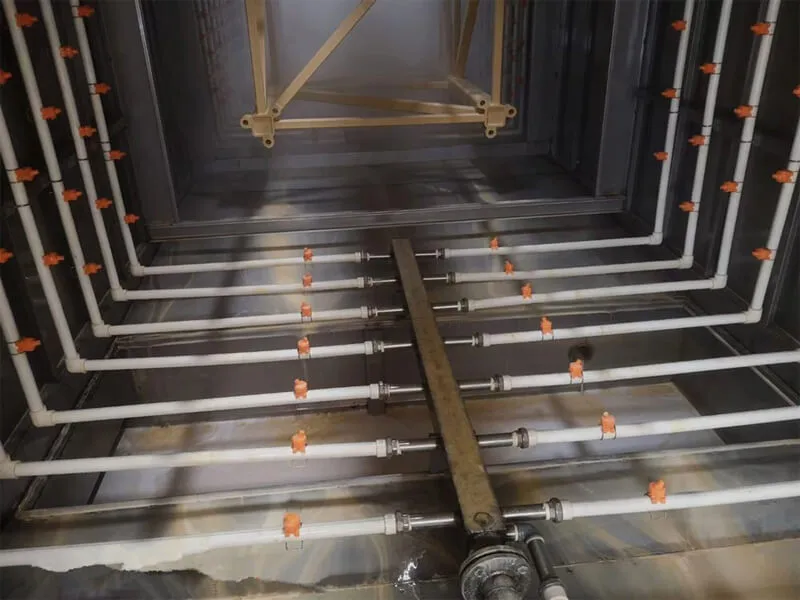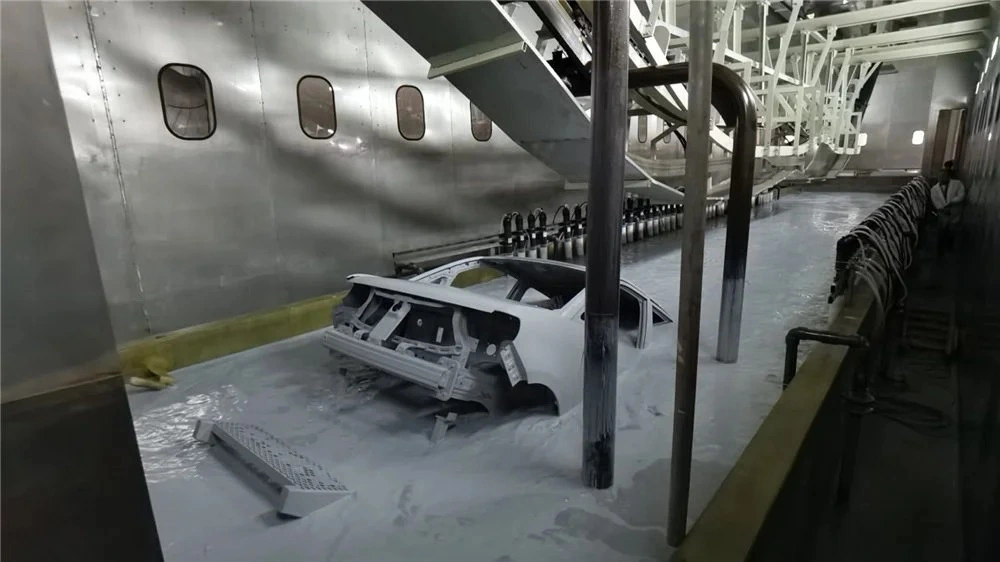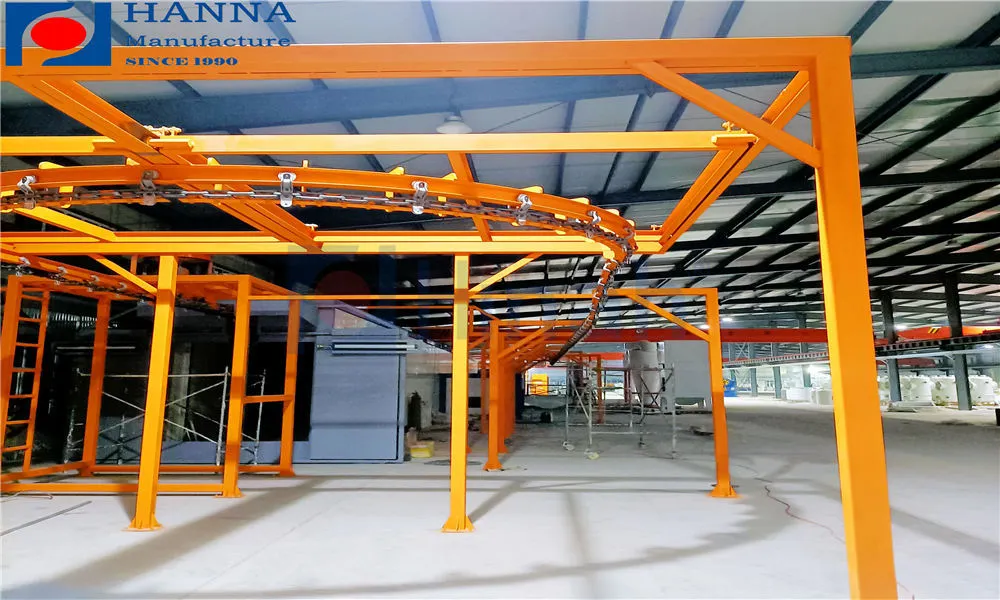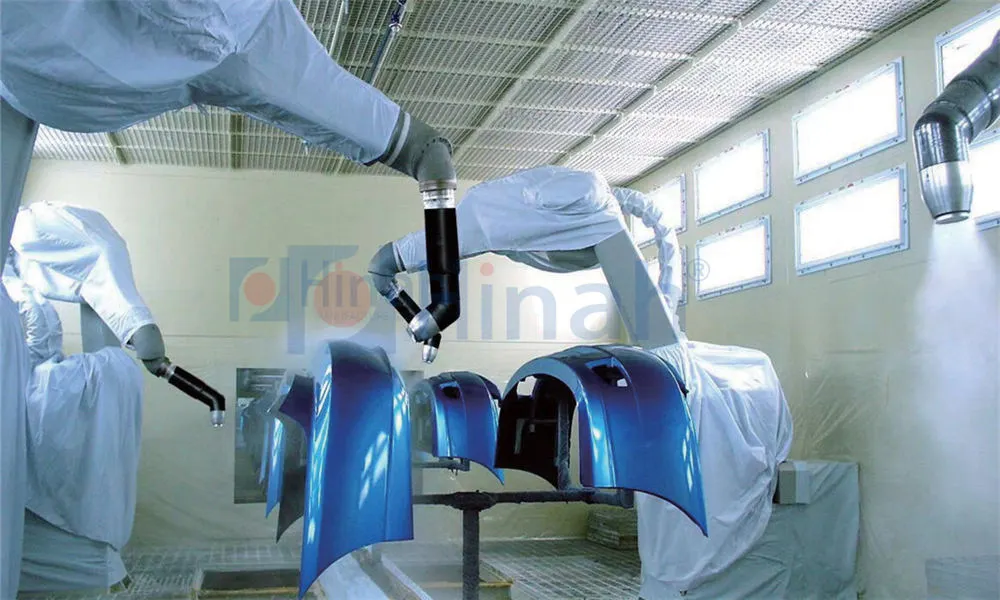If you're involved in DIY projects, small-scale manufacturing, or hobbyist work, you've likely heard about powder coating as a durable and eco-friendly finishing option. But what if you don't have the space or budget for a large industrial setup? That's where a small powder coating booth comes into play. These compact units are designed to handle smaller items with precision, offering professional-grade results without the hefty investment. In this article, we'll dive deep into everything you need to know about small powder coating booths, from their benefits and types to practical tips for choosing the right one for your needs. Whether you're coating automotive parts, furniture, or custom creations, understanding how a small powder coating booth works can transform your projects.

What is a Small Powder Coating Booth?
A small powder coating booth is a contained environment used to apply dry powder coatings to various objects, typically in limited spaces like workshops, garages, or small businesses. Unlike larger industrial systems, these booths are compact, often portable, and tailored for handling items such as bike frames, tools, or decorative pieces. The booth controls overspray and contains the powder, which is then cured under heat to form a hard, durable finish. This setup ensures safety by minimizing exposure to airborne particles and maximizes efficiency for low-volume projects. If you're new to powder coating, think of a small powder coating booth as your personal station for achieving smooth, even coats on smaller-scale items.
Why Invest in a Small Powder Coating Booth?
The advantages of using a small powder coating booth are numerous, especially for individuals and small enterprises. First, it offers cost savings compared to outsourcing jobs or buying larger equipment. You can achieve high-quality finishes in-house, reducing lead times and expenses. Additionally, a small powder coating booth is space-efficient, fitting neatly into tight areas without compromising functionality. Environmentally, powder coating is a greener alternative to liquid paints, as it produces minimal waste and contains no harmful solvents. With a small powder coating booth, you also gain versatility—it can handle a wide range of materials, including metal, wood (with primers), and plastics, making it ideal for diverse applications like restoring vintage items or prototyping products.
Types of Small Powder Coating Booths
When shopping for a small powder coating booth, you'll encounter several varieties tailored to different needs. The most common types include:
Bench-top models: These are designed to sit on a workbench or table, perfect for very small items like jewelry or electronic components. They often come with built-in ventilation and are easy to set up.
Portable booths: Lightweight and foldable, these units are great for mobile operations or temporary setups. They typically include wheels for easy movement and can be stored away when not in use.
Enclosed cabinets: These provide more robust containment for slightly larger projects, such as automotive parts or furniture legs. They feature better airflow systems and safety mechanisms to handle higher volumes of powder.
Custom-built options: For those with specific requirements, some suppliers offer modular small powder coating booths that can be expanded or adapted over time.
Each type has its pros and cons, so consider your typical project size and frequency when selecting a small powder coating booth.

How to Choose the Right Small Powder Coating Booth
Selecting the perfect small powder coating booth involves evaluating several factors to ensure it meets your demands. Start by assessing the size of items you'll coat—measure the largest object and choose a booth with adequate interior dimensions. Next, consider the booth's airflow and filtration system; efficient ventilation is crucial for safety and finish quality. Look for features like adjustable fans and easy-to-clean filters. Budget is another key aspect; small powder coating booths can range from a few hundred to several thousand dollars, so balance cost with durability and features. Also, check for safety certifications and user reviews to avoid subpar products. Finally, think about future needs—a scalable small powder coating booth might save you from upgrading too soon.
Common Applications for Small Powder Coating Booths
A small powder coating booth isn't just for industrial use; it's popular in various settings. Hobbyists love it for coating model kits, firearms, or art sculptures, as it provides a uniform finish that resists chipping. In automotive repair shops, a small powder coating booth is used for parts like rims, engine components, or brackets, enhancing durability against rust and wear. Small manufacturers rely on it for producing batches of consumer goods, from furniture hardware to agricultural tools. Even artists and designers use these booths to add vibrant colors to metal artworks. The flexibility of a small powder coating booth makes it a valuable tool across industries, ensuring professional results on a manageable scale.
Cost Analysis: Investing in a Small Powder Coating Booth
Understanding the costs associated with a small powder coating booth is essential for budgeting. Initial purchase prices vary based on size and features—basic models start around $500, while advanced units can exceed $3,000. Don't forget additional expenses like powder materials, which cost $20-$50 per pound, and maintenance items such as replacement filters or lighting. Operating costs are generally low, as powder coating consumes less energy compared to wet painting systems. However, factor in potential upgrades, like adding a recovery system to reuse excess powder. Overall, a small powder coating booth can offer a strong return on investment by reducing outsourcing fees and improving product quality. For small businesses, this often translates to higher customer satisfaction and repeat orders.
Technical Insights into Small Powder Coating Booths
Delving into the technical side, a small powder coating booth operates on principles of electrostatic application and thermal curing. The booth uses a gun to charge powder particles, which adhere to a grounded object through attraction. Key components include the booth enclosure, exhaust system, and grounding mechanism. Proper grounding is vital to prevent defects like orange peel textures. When it comes to maintenance, regularly clean the booth interior and check for air leaks to ensure consistent performance. Safety-wise, always wear protective gear and ensure adequate ventilation to avoid inhalation risks. For those interested in DIY builds, note that constructing a small powder coating booth requires knowledge of electrical systems and local regulations—often, pre-made units are safer and more reliable.
Future Trends in Small Powder Coating Booths
The market for small powder coating booths is evolving with technological advancements. We're seeing more energy-efficient models that integrate IoT features for remote monitoring and control. Sustainability is also a growing focus, with booths designed to recycle powder and reduce waste. As materials science progresses, expect small powder coating booths to handle a broader range of substrates, including composites and heat-sensitive plastics. These innovations will make small powder coating booths even more accessible and efficient for users worldwide.
In summary, a small powder coating booth is a versatile and practical solution for anyone needing high-quality finishes on a smaller scale. By considering your specific needs and doing thorough research, you can find a unit that boosts your productivity and creativity.
Frequently Asked Questions (FAQ)
Q1: What safety precautions should I take when using a small powder coating booth?
A1: Always wear a respirator, gloves, and safety glasses to protect against powder inhalation and skin contact. Ensure the small powder coating booth is properly grounded to prevent electrostatic discharges, and work in a well-ventilated area to avoid fume buildup. Regularly inspect the booth for any damage or leaks.
Q2: How do I maintain a small powder coating booth to ensure longevity?
A2: Clean the booth interior after each use to remove residual powder, and replace filters as recommended by the manufacturer. Check electrical connections and ventilation systems periodically for wear. Storing the small powder coating booth in a dry, cool place can also prevent corrosion and extend its life.
Q3: Can a small powder coating booth handle different colors without cross-contamination?
A3: Yes, but it requires careful cleaning between color changes. Use dedicated tools and thoroughly clean the booth surfaces, gun, and hoses. Some small powder coating booths come with color-changing features or removable parts to simplify this process and maintain finish quality.
Q4: What is the average lifespan of a small powder coating booth?
A4: With proper maintenance, a small powder coating booth can last 5-10 years or more. Factors like frequency of use, environmental conditions, and build quality play a role. Investing in a durable model and following the manufacturer's guidelines can help maximize its lifespan.
Q5: Are there any specific power requirements for operating a small powder coating booth?
A5: Most small powder coating booths run on standard household outlets (110-120V), but larger models might need 220V. Check the product specifications for voltage and amperage needs. Ensure your workspace has adequate electrical capacity to avoid overloads, and consider using a surge protector for safety.









